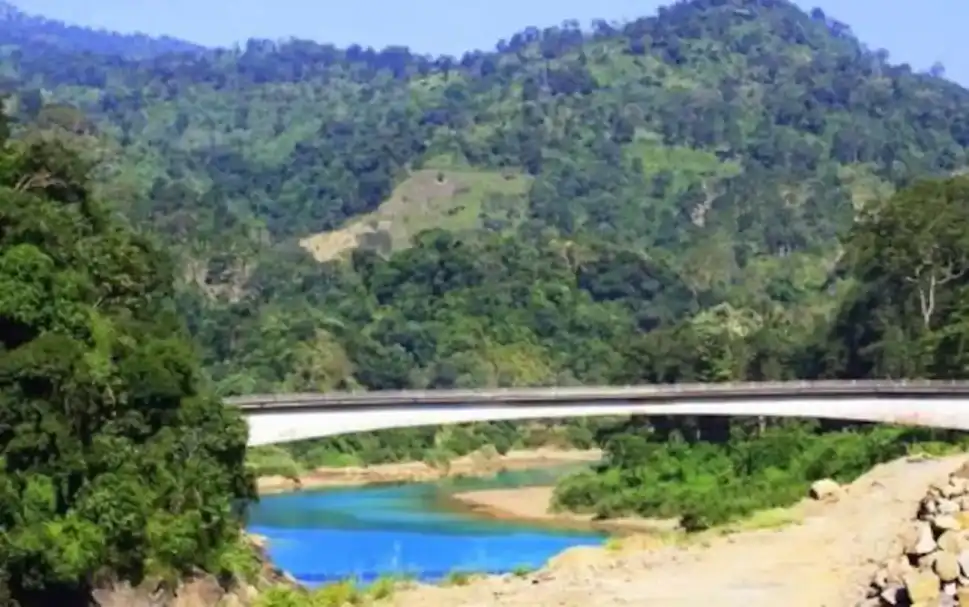A Comprehensive Guide to East Jaintia Hills District
Introduction
East Jaintia Hills, located in the northeastern state of Meghalaya, India, is a district of immense cultural heritage, picturesque landscapes, and vibrant communities. This district, carved out from the Jaintia Hills, offers a unique blend of natural beauty, historical significance, and cultural richness.
Demography
East Jaintia Hills is predominantly inhabited by the Jaintia people, a sub-tribe of the Khasi community. The population also includes other indigenous groups and a minority of non-tribal settlers. The Jaintia people are known for their matrilineal society, where lineage and inheritance are traced through the female line. The district has a diverse religious composition, with Christianity being the dominant religion, followed by Hinduism and indigenous faiths.
Culture
The culture of East Jaintia Hills is a vibrant tapestry of traditional practices, festivals, and arts. The Jaintia people celebrate numerous festivals, the most notable being Behdienkhlam, a pre-harvest festival aimed at driving away plague and bad spirits. This festival is marked by traditional dances, music, and rituals performed to honor the deity U Blei Shnong. Another significant festival is the Chad Sukra, which marks the beginning of the sowing season.
Traditional music and dance are integral to the Jaintia culture, with instruments like the duitara (a four-stringed instrument) and the ka bom (drum) commonly used. The district is also known for its rich oral traditions, where folktales and legends are passed down through generations, preserving the community's heritage and values.
Geography and Topography
East Jaintia Hills is characterized by its rugged terrain, lush green valleys, and rolling hills. The district is part of the larger Meghalaya plateau and is marked by numerous rivers, caves, and waterfalls. The landscape is a mix of highland plateaus and deep gorges, providing a diverse ecosystem that supports a variety of flora and fauna.
Topographical Highlights:
- Syndai Caves: A network of limestone caves with intricate formations, popular among spelunkers and tourists.
- Krang Suri Falls: A majestic waterfall surrounded by dense forests, offering a serene spot for nature lovers.
- Narpuh Wildlife Sanctuary: A biodiversity hotspot that protects various species of plants and animals native to the region.
Cuisines
The culinary landscape of East Jaintia Hills is a reflection of its cultural diversity and agricultural abundance. The staple diet includes rice, meat, and a variety of vegetables. Traditional dishes are often prepared using indigenous methods and locally sourced ingredients.
Popular Dishes:
- Jadoh: A fragrant rice dish cooked with pork and spices, often served with chutneys.
- Tungrymbai: A fermented soybean paste dish, seasoned with local herbs and spices.
- Doh-Khlieh: A salad made with minced pork, onions, and green chilies, often accompanied by a tangy dressing.
Local beverages like rice beer and tea brewed from indigenous plants are also popular, adding to the district's rich culinary heritage.
History
East Jaintia Hills has a storied past, with evidence of human habitation dating back to prehistoric times. The region was historically part of the Jaintia Kingdom, a powerful entity that controlled trade routes and resources in the area. The Jaintia rulers were known for their administrative acumen and resistance against external invasions.
The arrival of the British in the 19th century marked a significant shift in the region's history. The Jaintia Kingdom was annexed by the British in 1835, leading to several uprisings and resistance movements by the local populace. Post-independence, the region became part of Meghalaya, and in 2012, East Jaintia Hills was carved out as a separate district to promote better administrative efficiency and development.
Poets and Authors
East Jaintia Hills has produced notable literary figures who have contributed to the region's cultural and intellectual heritage. One prominent figure is the poet and writer Kynpham Sing Nongkynrih, whose works explore themes of identity, tradition, and modernity. His poetry, written in Khasi and English, has been widely acclaimed for its depth and lyrical beauty.
Another significant literary personality is Esther Syiem, a renowned academic and writer whose works focus on Khasi folklore and women's issues. Her research and writings have played a crucial role in preserving and promoting the indigenous literature of Meghalaya.
Administration
The administrative structure of East Jaintia Hills is designed to ensure efficient governance and development. The district is divided into several administrative units, including subdivisions and blocks, each managed by appointed officials. The Deputy Commissioner, as the head of the district administration, oversees various departments and ensures the implementation of government schemes and policies.
Administrative Divisions:
- Khliehriat: The district headquarters, serving as the central hub for administrative activities.
- Saipung: A significant block known for its agricultural and mining activities.
- Ladrymbai: A major commercial center with vibrant markets and trade activities.
Local governance is further strengthened through village councils, which play a pivotal role in decision-making and conflict resolution at the grassroots level.
Conclusion
East Jaintia Hills, with its rich cultural heritage, stunning landscapes, and vibrant communities, stands as a testament to the resilience and diversity of the Jaintia people. From the ancient traditions and festivals to the modern literary contributions and administrative efforts, the district embodies a harmonious blend of the past and the present. As it continues to develop and grow, East Jaintia Hills remains a captivating destination for those seeking to explore the cultural and natural beauty of Meghalaya.
